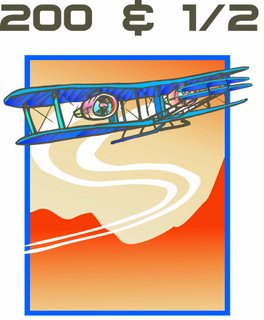As I inspected the massive, geared, Continental engine, I see nothing unusual. The oil cap is still on, the dipstick is in place and all other indications seem normal. I inspect the engine oil drain and find a small puddle of oil in the cowling directly below it.
It seems that the engine oil quick drain, although properly safety wired closed, is leaking. It must be a bad quick drain valve, or a seal or gasket internally that is in the beginning stages of failure. As I discussed the situation with the Director of Maintenance on the cell phone, it is determined that the leak in slow enough not to cause a complete loss of oil, and that the quick drain may have been inadvertently closed improperly. I cleaned up the oil in the bottom of the cowl and was pleasantly surprised to find that it is only about a tablespoon of oil in the cowl.
We decided that the quick drain needed to be changed. I chatted with the mechanic that did the original oil change, and replaced the drain. I was determined that the drain had in fact failed.
The week before Christmas is one of the busiest times of year for Royal Air. All of our aircraft are in service and flying routes all over New South Montucky. It is not the best time for an aircraft to be out of service for major maintenance work.
The oil leak had not gone away. The puddles have gotten bigger and more frequent, the streak on the gear door had gotten larger, and wiping it away only was a waste of time. Oil was leaking from the engine. That was fact. Where it was coming from was still a mystery.
The cowl was stripped off again and hosed down with solvent to clean away the oil. It was thought that the prop seal was leaking. Prop removed, inspected, reinstalled. Ops check ok. Engine through bolts, not torqued to spec or broken? Nope, ops check ok.
In an effort to trouble shoot even farther, we decided that we would run up the engine at full take off power, sans cowl and have spotters check for leaks. I’m glad I wasn’t one of those spotters. They had to stand outside in the bitter cold, enduring severe wind chill generated by the prop wash, standing next to a howling engine, while working in close proximity to a very large propeller spinning at a blistering 2300 rpm that cold easily cut a man in two.
A normal run-up produced no results. The next course of action was to run the engine as if it were producing take-off power and then reduce it to a climb power setting and then to a cruise power setting. This would simulate all the normal flight regimes on the ground hoping to produce the signs of the mysterious oil leak.
As the engines roared to full power, the SDSUV began to shudder and strain against the brakes, gently jostling me in my seat. I reduced the power to the climb power setting, and I noticed the mechanic on the outboard side of the engine take a keen interest in something. He gave me a signal that he had found something.
I taxied back to the maintenance hanger. The news wasn’t good. It was bad. Really bad.
The engine case was cracked! At high power settings oil flowed out of the case and into the cowl creating the oily mess we had been trying to track down for a good part of a week.
A decision was made. The lead mechanic and the Director of Maintenance would start Friday morning and would do a complete teardown and rebuild of the engine hoping to have it running for revenue service on Monday afternoon. It was a daunting task, but doable.
Over the course of the weekend I kept in touch with the pit crew on the progress of the NASCAR style engine change/rebuild. I even tried to help the moral by having pizza delivered to the hangar on Saturday afternoon.
On Monday I arrived at the airport to the beautifully distinctive sound of the geared Continentals echoing off the hangars near the run-up area. The Royal Air Garmin Cessna Big Box Hauler pit crew had pulled it off. It was back to the final legs of the Christmas Peak 500.

1 comment:
YAY! Excellent. :) Its good to be back.
Post a Comment